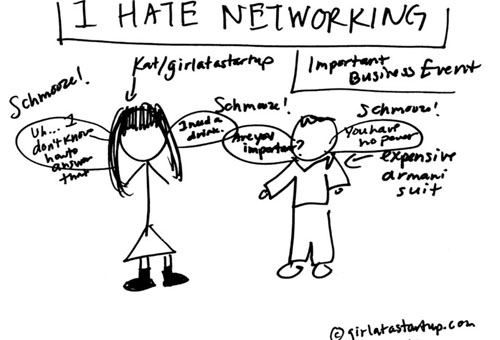By Amber Vincent
“In today’s complex society of comparably skilled, interdependent people, it is more true than ever that success is less a function of what you know than who you know and who knows you.”
Department of Sociology, University of Chicago
After their license, the most valuable, and often ignored, asset an attorney has is their network of personal contacts. If your firm is stuck on creating its overall database, create your own using your email system, such as Outlook, or at the very least keep one in a spreadsheet. Be sure to categorize each contact with their industry or practice area (Real Estate, designate what kind of contact they are such as Referral or Client; and what they should receive from you like a holiday card so you can easily pull your list when the time comes.)
Understanding how business networks function, what makes some relationships stronger than others, and how to evaluate a robust community of influential contacts is key to efficiently achieving your goals.
A professional social network is a group of individuals who are in contact with one another and who serve each other as an unpaid labor source furthering their mutual business interests.
There are three kinds of contacts in such a network:
- Everyone you know
- Everyone you have ever known, and
- Everyone who knows you (but you don’t know them)
The first group is where we focus most of our attention. It is the easily-met people, the people to whom you feel closest, including family, colleagues, neighbors, and friends.
The second group is the one most professionals tend to ignore. “Everyone you have every known” are the contacts that you have allowed to fade over time, people you once knew well but no longer see often, if ever, or feel close to. This group – former neighbors, past customers or clients, someone you “did a deal with last year,” classmates, a person who served on a committee or board with you – is a group worth focusing on.
Research shows that professionals often get key information, access to scarce and critical resources, some of their best leads and referrals from this second group. That’s because these people are most likely to know about opportunities unknown to you. This makes it fair to say that a large measure of the future success in business lies with those from your past.
The third group of contacts is important in another way. They are a resource you have, but of which you are unaware. You become aware of them by that unexpected phone call or email with the familiar beginning: “I was taking with your friend, Mary Jones, and she said you would be just the person we need to handle our new joint venture,” or “I don’t believe we’ve met, but several people I trust have said that we would be lucky to have you help with our new venture.”
One of the goals in designing your network is to emphasize this third kind of interaction, commonly called the “power-” or “endorsement-referral” so that your network does the work of furthering your interests for you. How do you accomplish power-referrals? By maintaining regular contact with members of your network, and by clearly communicating who you are and demonstrating to those contacts over time the specific applications of your expertise. Do that, and reciprocate when helped by others, and you’ll develop a robust flow market information you can use and regular looks at desirable matters.


